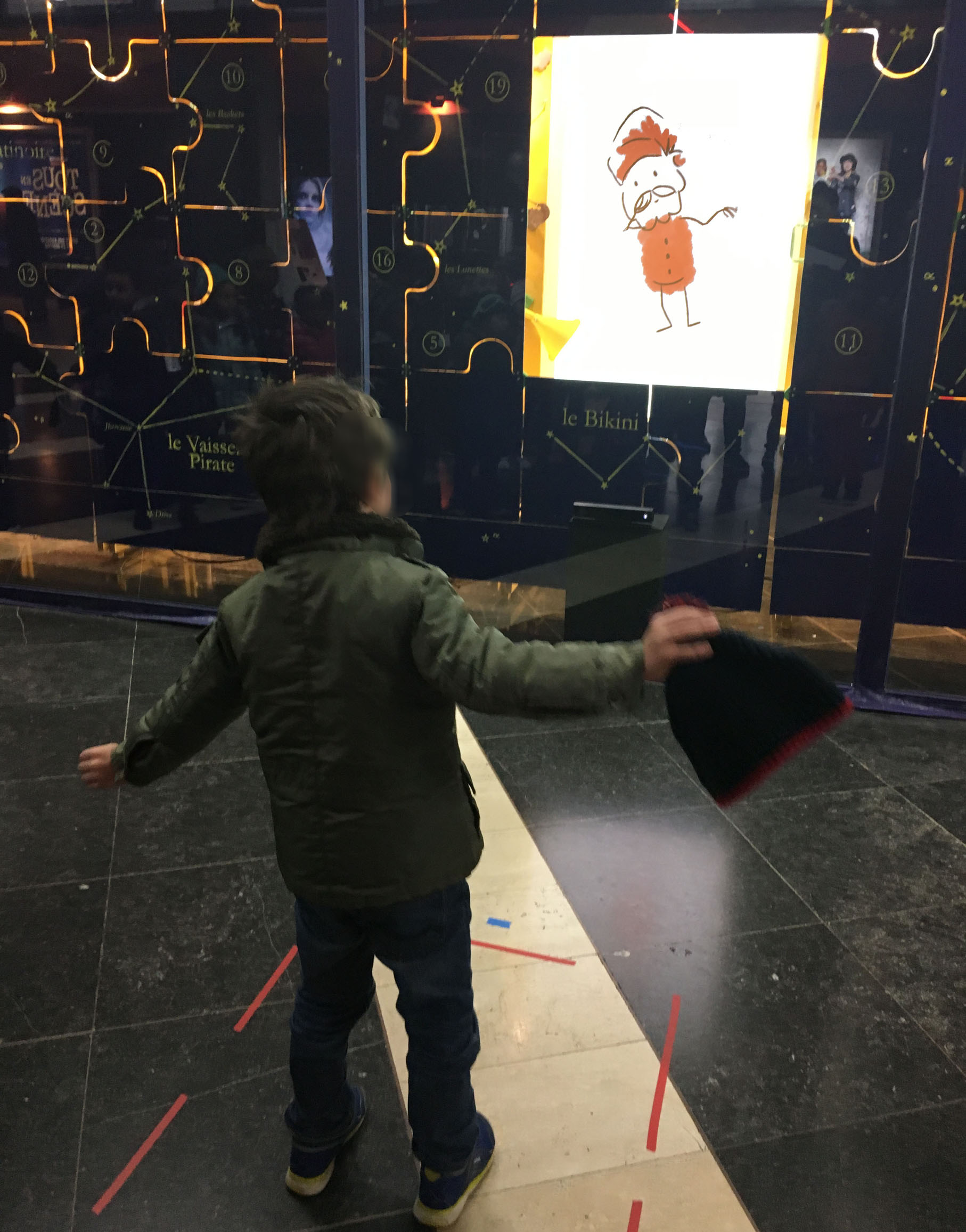Section: New Results
Creativity
Participants : Sarah Fdili Alaoui, Michel Beaudouin-Lafon, Ghita Jalal, Wendy Mackay, Joseph Malloch, Nolwenn Maudet, Michael Wessely, Theophanis Tsandilas.
ExSitu is interested in understanding the work practices of creative professionals, particularly artists, designers, and scientists, who push the limits of interactive technology.
We explore how concepts of substrate and co-adaptation can change how we design interactive technology for supporting creativity. Co-adaptation is the phenomenon in which users both adapt their behavior to the system’s constraints, and appropriate the system for their own needs. We explore these concepts using participatory design studies in creative contexts with expert and non-expert users. We study structuring layouts for graphic designers, sketching movement for choreographers, expressive movements for dancers and further explore expressive gesture of non-experts on mobile devices and possible interactions on hybrid stretchable interfaces. These studies require a multi-disciplinary design team that works closely with users throughout the design process. We create situations that cause users to reflect deeply about their activities in context and work with them to articulate the design problem. The experiments, prototypes and systems that we developed and deployed are illustrated below:
Graphic design: Our studies of the creative design practices of professional graphic designers show that designers appropriate visual properties of existing tools to create their own personal 'instruments'. Unfortunately, most professional design tools make this difficult: At best, they provide only indirect access, through property sheets or dialog boxes, to visual properties, such as color and style, rather treating them as as independent interactive objects. We developed a number of composition tools that demonstrate how to explicitly reify visual properties, using the concept of co-adaptive instruments. Ghita Jalal successfully defended her doctoral dissertation on this topic (see [9]).
We also examined artists’ and designers’ practices as they manipulate color and create layouts in their projects. We found that artists and designers select colors from personal representations. They manipulate color in the context of its surrounding graphical elements, and combine it with other visual properties such as texture. As they create their layouts, designers establish links among visual properties such as size, position, and layering of graphical elements. They define rules for how these properties change in space, across instances of the same composition, or in time, across related compositions. We also found that designers prefer tools that provide direct access to visual properties.
Choreography: We are interested in designing choreographic support tools because choreographers rarely have access to interactive tools that are designed specifically to support their creative process [13]. In order to design for such a technology, we interviewed six contemporary choreographers about their creative practice. We found that even though each process is unique, choreographers represent their ideas by applying a set of operations onto choreographic objects. Throughout different creative phases, choreographers compose by shifting among various degrees of specificity and vary their focal points from dancers to stage, to interaction, to the whole piece. Based on our findings, we presented a framework for articulating the higher-level patterns that emerge from these complex and idiosyncratic processes. We then articulated the resulting implications for the design of interactive tools to support the choreographic practice.
On generating choreographic ideas, we developed the Choreographer’s Workbench, a full-body interactive system that aims to help choreographers explore and design dance movements during the ideation phase by creating a link between past recorded movement ideas and revealing their underlying relationships. The system explores how to increase the discoverability and appropriateness of movement ideas via feedforward visualization of movement characteristics.
|
We collaborated with the N+1 theater group on the ”Grande Vitrine” art and science project, an interactive installation that takes place during the month of Christmas. It consisted of a virtual animated character with whom participants interact and a physical kinetic sculpture whose motions are triggered by participant interaction (Figure 5). The participant were expected to perform full-body movements and figure out the correct one that will help the animated character escape from the virtual screen into the physical motorized display. The installation tested the concept of ”shaping” from experimental psychology where the participant is guided to make ”successive approximations” in arriving at the correct gesture. It was installed at the theater of Évry, that has a display on the shopping mall in Évry for the entire month of December.
Finally, we collaborated with Simon Fraser University on an interactive installation called still, moving. The installation created a sonic experience that heightens self-awareness of our micro-movements in stillness. Sound created an intimate envelope that nurtures self-reflection and the experience of inward sensations. In still, moving, the audience was equipped with two Myo Armbands that capture their movements as well as their muscular activity. The physiological signals such as muscle tension and subtle accelerations were analyzed and mapped to a sound environment in order to increase perception of the inner self. The design of the relationship between movement and sound was evolving along the interaction, shifting the soundscape from reflective to challenging, guiding the audience in an exploration of novel and gradual relationship to weight and understanding of the complexity of the silent body.
Everyday creativity:
Finally, for non expert users, we developed an inexpensive method for fabricating Stretchis, highly stretchable interfaces that combine sensing and displaying capabilities [22]. This method enables designers and casual makers to embed transparent conductors and electroluminescence displays in stretchable PDMS substrates (Figure 6). We showed how to prototype stretchable user interfaces for a range of application scenarios by using standard design software and screen-printing techniques. Despite the use of inexpensive equipment, our results demonstrate that we can produce durable and highly stretchable sensors and displays that remain functional under strain levels of more than 100%.



